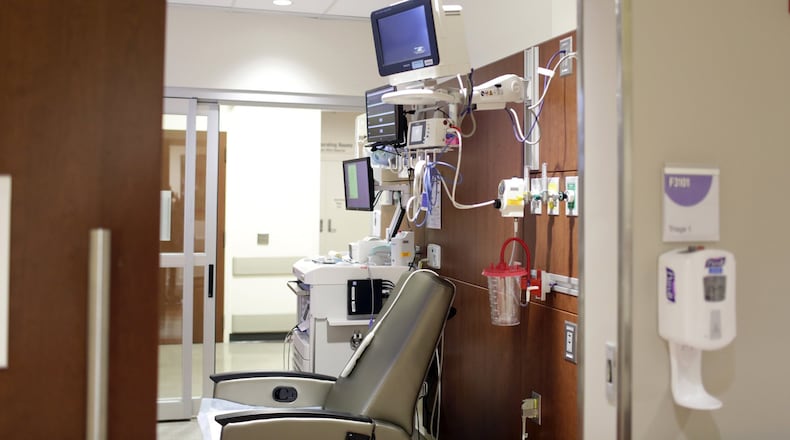“First of all, they have to have a mental health disorder, and secondly, there has to be either a risk to themselves or to others in the community and/or an inability completely to care for themselves, putting their own livelihood at risk,” said Dr. Nancy Pook, medical director of emergency services at Kettering Health.
A pink slip allows doctors to hold those patients for a 24-hour observation period up to a 72-hour hold at a psychiatry unit at a hospital. The hospital has three days to file an affidavit of mental illness with the county probate court. The court has 10 days from the date of the pink slip to have a hearing, according to Ohio revised code.
“We take that very seriously and provide a safe environment for them to be evaluated first,” Pook said. “...These are some of the longest emergency department stays that we deal with all across the region.”
Few pink slips result in 72-hour holds
In many cases, patients do not need to be held for the full three days that pink slip allows for, doctors and law enforcement say.
“There are times when a person is pink-slipped and are not held for 72 hours, one such example is the person is able to get the needed medication and it has the desired result and the person is no longer having a mental health issue,” the Dayton Police Department said.
Recent discussions on the procedural aspects of the pink-slip process between law enforcement and emergency room doctors led to revealing some inconsistencies in how different groups view the process, said Dr. William Marriott, a Premier Health emergency medicine specialist.
“One that became evident very early on is that some law enforcement officers were under the belief that if they completed the unvoluntary admission form that it was binding for 72 hours,” Marriott said.
Doctors can lift that pink-slip, or involuntary admission form, after the evaluation, he said.
If an individual is not found to be in an acute crisis, they can be discharged on a safety plan and referred to an outpatient behavioral health treatment provider in the community for follow-up care.
That is not done without cause or evidence that the person is no longer a danger, Marriott said.
“We often will find that their behavior may be drug induced and after a period of observation and detoxification, they no longer are displaying the same behavior,” Marriott said.
The needs of the patient may be different than what can be provided at the emergency room.
“We might find that their behavior is quite chronic, and it’s consistent with their chronic mental illness and does not require any specific action on the part of an acute care hospital at that point,” Marriott said.
Getting to patients sooners
Getting a pink-slip and transported to an ER may be the last resort when people become a danger, but some mental health advocates want people to be able to get a pink-slip sooner before their mental health decompensates to the point of potentially causing harm.
A proposed Ohio law would add a category “psychiatric deterioration” to the list of reasons why a person a could be pink-slipped.
“Our goal is to get people treatment sooner,” said Luke Russell, executive director of the National Alliance on Mental Illness (NAMI) of Ohio.
H.B. 249 also modifies the requirement that the person being pink-slipped must represent a substantial risk of physical harm to self or others. The bill would remove the requirement that the substantial risk of harm has to be a risk of physical harm.
A number of people don’t get pink-slipped because they don’t yet meet the criteria for getting transported on a pink slip, but if their mental health continues to decompensate, then that could cause worse issues.
Russell used the example of loitering, where someone may have been told not to loiter at a business but they continue to do so.
“They’ve been told a couple of times, you can’t hang out in front of this business, but it’s their mental illness,” Russell said. “They’re not really a harm to themselves, they’re not a harm to anybody else, but they’re deteriorating, and then eventually they’ll have to arrest them.”
“Our question is, why don’t we get people earlier into the system, the treatment system, so we can divert them from the judicial system and the criminal justice system when really they’re there just because of their mental illness,” he said.
About the Author

